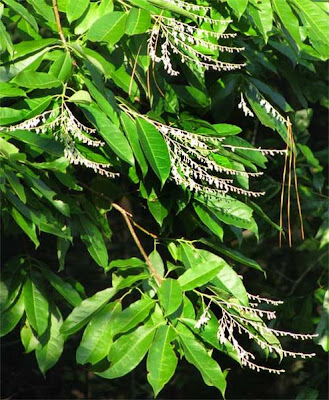I noted in previous post, I bought a fair sized specimen Sourwood tree. Oxydendrum arboreum.
Sourwoods are native to the Southeastern united states. They are relatively undomesticated. In other words, there are few cultivars. This specimen was labeled, just, "Sourwood Tree".
According to Portland nursery, in this area, the tree is upright, slow growing, with a rounded top appearance. They grow 25 to 30 feet tall, but in their native habitat grow much taller, 100 feet. They like an acidic, peaty soil, and should be mulched without much plant competition under the tree.
Portland nursery states when planted in lawns, the tree does not thrive. Since I won't have grass growing up to the trunk, and will keep it mulched and add compost, I hope it will do better.
According to http://forestry.about.com/od/silviculture/p/sourwood.htm, sourwoods tolerate clay soil, and loam, sand, acidic soils. My soil is a clay soil, somewhat acidic. Also stated there "Reportedly not highly drought tolerant, but there are beautiful specimens in USDA hardiness zone 7 growing in the open sun in poor clay with no irrigation."
Pic from wikimedia commons . Sourwood trees make a great varietal honey. I will have a beehive near this tree, so maybe there will be a small amount of sourwood honey flavor in the honey. At least, it should feed the honeybees. Along with the lindens I planted, and the fruit trees, and the herbs and flowers.
Yesterday I raked back the straw mulch, and added a few inches of compost to enrich the soil and feed the tree.
I hope it grows.


From what I read you are doing it should do just fine and bounce back. By the looks of the pictures, they look like you are taking care of them and giving them TLC.
ReplyDeleteThank you. It has fall and early winter to grow new roots, before freeze; and early spring to grow roots, before hot season. Plus, next year's leaf and shoot growth will be based on the existing roots, so I think it should not overgrow it's roots. TLC is the gardener's way.
ReplyDelete